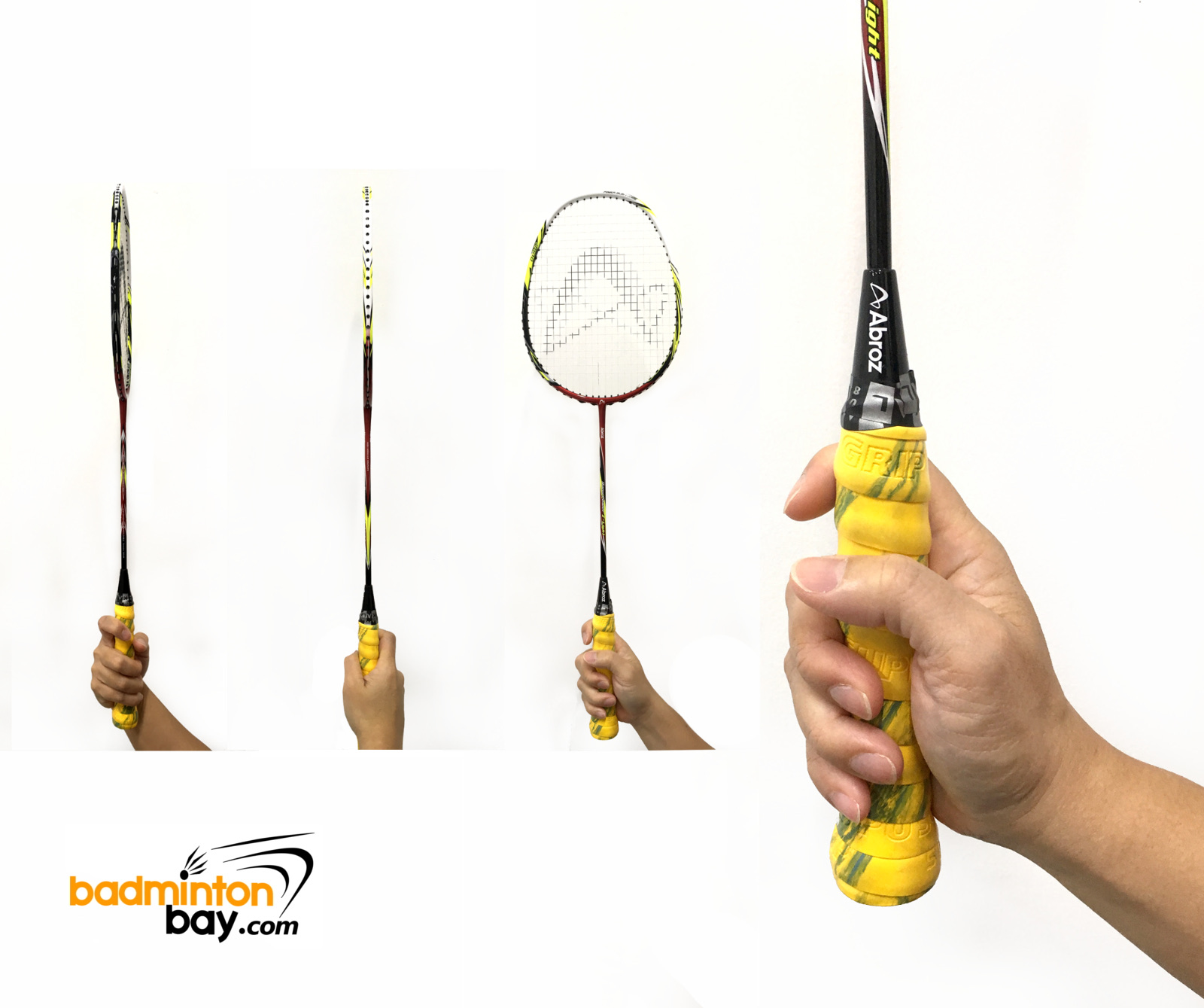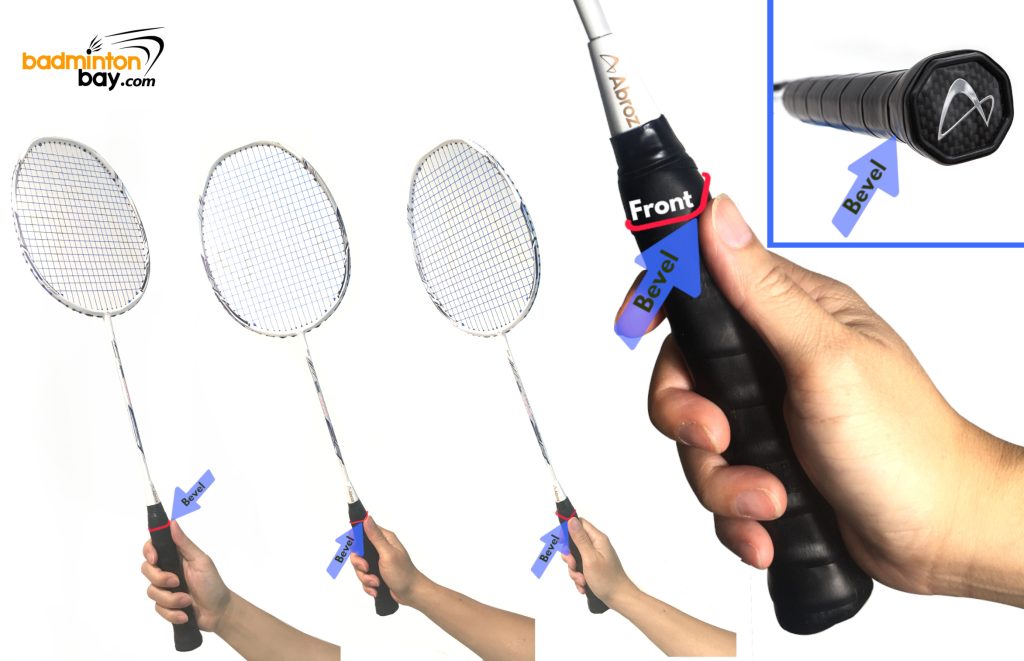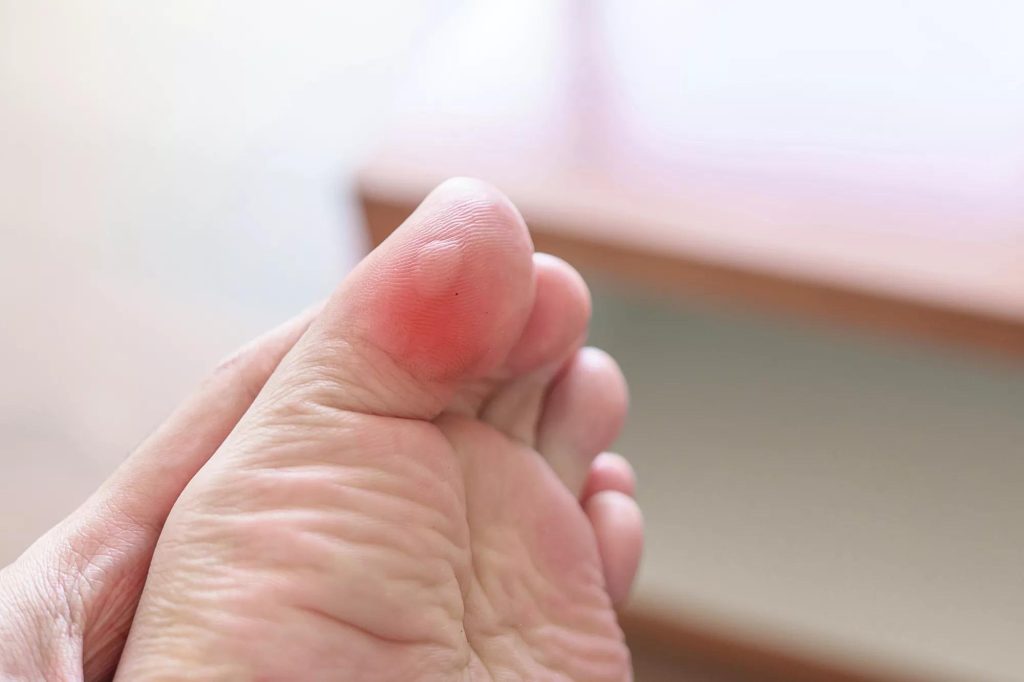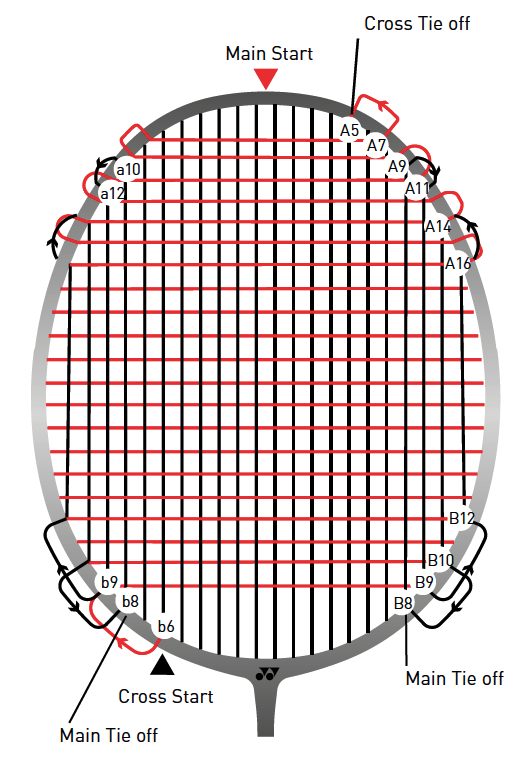To grip a badminton racket correctly, hold it like a handshake. This ensures control and power during play.
Learning the proper grip in badminton is crucial for players of all levels. A good grip can improve your shots, reduce strain, and enhance overall performance. Many players struggle with this basic yet vital skill, which can affect their game.
In this blog post, we will guide you through the best techniques to grip your racket. Whether you’re a beginner or looking to refine your skills, understanding the right way to hold your racket can make a big difference. Let’s dive into the essentials and get you gripping your racket like a pro.

Credit: m.youtube.com
Introduction To Racket Grip
Badminton is a fast-paced sport. Your grip on the racket matters a lot. A proper grip can make a big difference in your game. It can help you control the shuttle better. It can also prevent injuries.
Importance Of Proper Grip
A proper grip is the foundation of good badminton. It affects how well you can hit the shuttle. It also impacts your power and accuracy. Holding the racket correctly helps you move smoothly on the court. It keeps your wrist and arm in a natural position. This reduces the risk of strain or injury. A good grip lets you play for longer without getting tired quickly.
Impact On Performance
Your performance in badminton hinges on your grip. A proper grip gives you better control over shots. It allows you to hit with precision. You can switch between different shots easily. Whether it’s a smash, drop shot, or clear, the right grip makes a difference. It helps you respond quickly to your opponent’s shots. This agility can turn the tide of the game in your favor. Practicing a proper grip can improve your overall game skills.
Basic Grip Types
Understanding the basic grip types in badminton is essential. It helps improve your control and power during gameplay. There are two main grips: the Forehand Grip and the Backhand Grip. Learning these grips can enhance your performance on the court.
Forehand Grip
The Forehand Grip is widely used in badminton. It is the most natural grip for many players. Follow these steps to master the forehand grip:
- Hold the racket handle like shaking hands with someone.
- Ensure the racket face is perpendicular to the floor.
- Wrap your fingers around the handle. Keep a small gap between the index finger and the middle finger.
- Place your thumb comfortably against the handle’s side bevel.
This grip allows for powerful and accurate shots. It is perfect for smashes, clears, and drives.
Backhand Grip
The Backhand Grip is crucial for playing shots on the backhand side. Follow these steps to get it right:
- Hold the racket as if you are using the forehand grip.
- Rotate the racket clockwise (for right-handers) or counterclockwise (for left-handers) about a quarter turn.
- Ensure the thumb rests comfortably against the back of the handle. This provides extra support and control.
- Adjust your fingers to maintain a firm, yet relaxed grip.
This grip is ideal for backhand clears, drops, and drives. It gives you the flexibility to reach and return shots with ease.
Mastering these basic grip types can significantly improve your gameplay. Practice them regularly to build muscle memory and confidence.
Forehand Grip Techniques
The forehand grip is essential for playing badminton. It allows you to perform powerful and accurate shots. Knowing the correct technique can make a huge difference. Let’s explore the key aspects of the forehand grip.
Hand Placement
Proper hand placement is the foundation of the forehand grip. Follow these steps:
- Hold the racket with your non-playing hand.
- Place the handle in your playing hand.
- Shake hands with the racket.
This should create a V-shape between your thumb and index finger. The grip should feel comfortable but firm.
Finger Positioning
Finger positioning is crucial for control and flexibility. Here’s how to do it:
- Wrap your fingers around the handle.
- Keep your index finger slightly separated from the other fingers.
- Your thumb should rest against the side of the handle.
Avoid gripping too tightly. A relaxed grip helps in swift movements.

Credit: blog.badmintonbay.com
Backhand Grip Techniques
The backhand grip is essential for mastering badminton. An incorrect grip can lead to poor shots. Knowing the right techniques can improve your backhand. Let’s explore the key elements of the backhand grip.
Thumb Placement
Proper thumb placement is crucial for a strong backhand grip. Place your thumb against the back of the racket handle. This provides better control and power. Ensure the thumb rests comfortably. Avoid pressing too hard. This can cause discomfort and reduce flexibility.
Wrist Flexibility
Wrist flexibility is vital for effective backhand shots. A flexible wrist allows for better racket movement. Practice rotating your wrist while holding the racket. This helps in generating power and precision. Keep your wrist relaxed. Tension can limit your range of motion.
Switching Between Grips
Switching between grips in badminton is essential for effective play. Proper grip techniques enhance control and power during matches. Practice regularly to become comfortable with different grips.
Switching between grips in badminton is essential for effective gameplay. Each shot requires a different grip. Mastering quick transitions can enhance your performance. This guide will help you switch between grips smoothly and efficiently.Smooth Transitions
Switching grips should feel natural. Practice holding the racket loosely. Avoid gripping it too tightly. This allows for quick changes. Keep your hands relaxed. Practice the basic grips first. Focus on feeling comfortable. Use your fingers to rotate the racket. This helps in changing grips fast.Practice Drills
Regular drills improve grip switching. Start with simple exercises. Hold the racket in a forehand grip. Switch to a backhand grip. Repeat this motion. Increase your speed gradually. Try shadow badminton. Mimic playing without a shuttlecock. Focus on grip changes. Use a wall for practice. Hit the shuttlecock against it. Change grips between hits.Common Grip Mistakes
Gripping a badminton racket correctly is crucial for effective play. Many players, especially beginners, make common grip mistakes. These errors can affect performance and lead to injury. Let’s look at two common grip mistakes: overgripping and incorrect finger placement.
Overgripping
Overgripping means holding the racket too tightly. This can reduce flexibility in wrist movement. It can also lead to quicker fatigue. Holding the racket too tight makes it hard to change grips during the game. Always aim for a relaxed grip. Your fingers should feel comfortable, not strained.
Incorrect Finger Placement
Incorrect finger placement is another common mistake. Some players place their fingers too close together. This can reduce control and power. Others might spread their fingers too far apart. This can make the grip unstable. Always check your finger placement. Your fingers should wrap around the handle naturally. The thumb should press lightly against the back of the handle. This provides better control and flexibility.
Advanced Grip Adjustments
Advanced grip adjustments in badminton play a crucial role in enhancing your gameplay. By fine-tuning your grip, you can achieve better control and power. This section will explore two critical aspects of advanced grip adjustments: power shots and net play.
Power Shots
For power shots, adjust your grip slightly. Move your thumb to the side of the handle. This increases leverage and power. Keep your grip firm but not too tight. Use your wrist and forearm strength. Practice this adjustment regularly. It helps generate more power in smashes and clears.
Net Play
Net play requires a different grip adjustment. Hold the racket with a lighter grip. This allows for quick and precise movements. Use your fingers to control the racket. Position your thumb on the back of the handle. This gives better control for delicate net shots. Adjust your grip quickly between shots. This agility makes net play more effective.

Credit: www.youtube.com
Grip Maintenance
Maintaining your badminton racket grip is crucial for optimal performance. A good grip ensures control and prevents injuries. Below, we will discuss how to take care of your racket handle and when to replace the grip tape.
Racket Handle Care
Your racket handle needs regular attention. Clean it with a dry cloth after every game. Sweat can damage the handle over time.
Avoid moisture. Keep your racket in a dry place. Use a protective cover to shield it from dust and dirt. These steps help extend the life of the handle.
Replacing Grip Tape
Grip tape wears out with use. Replace it to maintain a firm hold. Here’s how you can do it:
- Remove the old grip tape. Start from the bottom and peel it off.
- Clean the handle. Use a damp cloth to remove residue.
- Wrap the new grip tape. Begin at the bottom, overlapping slightly as you go up.
- Secure the end with adhesive tape. Make sure it is tight and smooth.
Regular replacement of grip tape keeps your racket in top condition. It also prevents blisters and improves your game.
Frequently Asked Questions
How To Hold A Badminton Racket Correctly?
To hold a badminton racket correctly, use a relaxed grip. Position your thumb against the wider side of the handle. Ensure your fingers are comfortably wrapped around it.
What Is The Best Grip For Beginners?
The best grip for beginners is the basic forehand grip. It provides control and flexibility. It helps beginners learn fundamental strokes effectively.
How To Switch Between Grips During A Game?
Switch between grips by loosening your fingers slightly. Rotate the racket handle as needed. Practice frequently to make the transitions smooth and quick.
Why Is The Grip Important In Badminton?
The grip is crucial for control and power. It affects your ability to perform various shots. A proper grip can prevent injuries and improve your game.
Conclusion
Mastering the right grip enhances your badminton performance. Practice different grips regularly. Focus on comfort and control in your grip. Avoid gripping too tightly; it limits movement. Experiment with grips to find what works best. Good grip technique improves your shots and reduces injury risk.
Remember, proper grip is key to a successful game. Happy playing!



